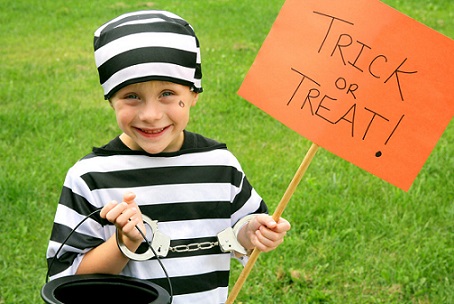
October is upon us! And at the end of this month, it will be Halloween. For most children, this is a fun holiday to dress up, imagine you are someone else, and go trick-or-treating! For those of you who give out candy, you will get to see the cool costumes of the season and hear the laughter of children. Some families will participate in neighborhood activities as well.
For the child with special needs, Halloween can be fun but it can also be challenging. For the anxious child, Halloween can be hard because they might be fearful or shy with strangers or in groups. For the child with sensory processing disorder, the loud noises of Halloween or their costume can be hard to tolerate. For the nonverbal child, they will not be able to verbally say "Trick or Treat" or "Thank you!" For the child with autism, Halloween can be challenging because of the costumes, loud noises, change in routine, and social demands.
If you anticipate that your child with special needs may have a challenging time with Halloween, there are some things that you can do.
Tips for parents
1. Prepare! In the weeks leading up to Halloween, have your child wear their costume around the house. Have them practice saying, "Trick or Treat!" if they are verbal. Maybe consider writing a social story for the child with autism and read it daily with them. Social Stories, which were created by Carol Gray, gives children very specific information about what they should expect and how to respond in a variety of situations. An example of a social story for Halloween can be found here: http://www.autismsocialstories.com/Halloween/.
2. Read Books about Halloween. Reading books about Halloween is an easy way to start talking about Halloween and to discuss stories, ideas, and to share ideas.
3. To Wear or Not to Wear: The Halloween Costume. If your child refused to wear a scratchy costume, something in their hair, or face paint, don't worry about it and don't force it. The day should be about having fun together.
4. Trick or Treat! Many children with autism have dietary restrictions or very selective food preferences. Friends and neighbors can give out inexpensive, yet inedible treats like stickers or squishy balls. As a parent, you could even visit your neighbors before the big night and leave them something that they can give your child that you know the child will enjoy. That also gives you the opportunity to let your neighbors know that you’re going to be trick-or-treating with your child with special needs. You can explain it’s their first time (or not) and you’re unsure how it will go, but are excited to give it a try and would appreciate their patience.
5. Keep it in perspective! It's best to let your child lead in terms of how long they can trick-or-treat for. If your child is done after 20 minutes, then so be it and head home.
Tips for the Ones Giving Out Candy
- Don’t assume a child is rude because he or she snubs your candy bowl; they may have an allergy or be diabetic and knows better than to put his or her hand in with all those Snickers.
- If a child grabs more than one candy, they may have poor fine motor skills.
- The child who takes forever to pick out one piece of candy may have motor planning issues.
- Likewise, don’t assume an “old enough” child has no manners because he or she doesn’t say thank you; they may be nonverbal or extremely shy.
- The child who runs into your home may not understand the difference between their home and yours and means you no harm. They probably see something in your house that they really like, such as your collection of Disney DVD's.
- Make sure pathways are clear and well lit. Just because you don’t take the side path doesn’t mean an eager trick-or-treater won’t, so take an extra moment to put away rakes and hoses.
- If your home has steps leading to the door, consider setting up a candy bowl at sidewalk level with a sign inviting children who might not be able to navigate the stairs or may be in a wheelchair. Don’t want to miss the interaction? Set up camp on your patio, and greet children as they come up the walk.
Make your own tradition this year, one of acceptance and patience. This fresh perspective may mean the difference between a frightening, stressful holiday and one full of happy memories.

